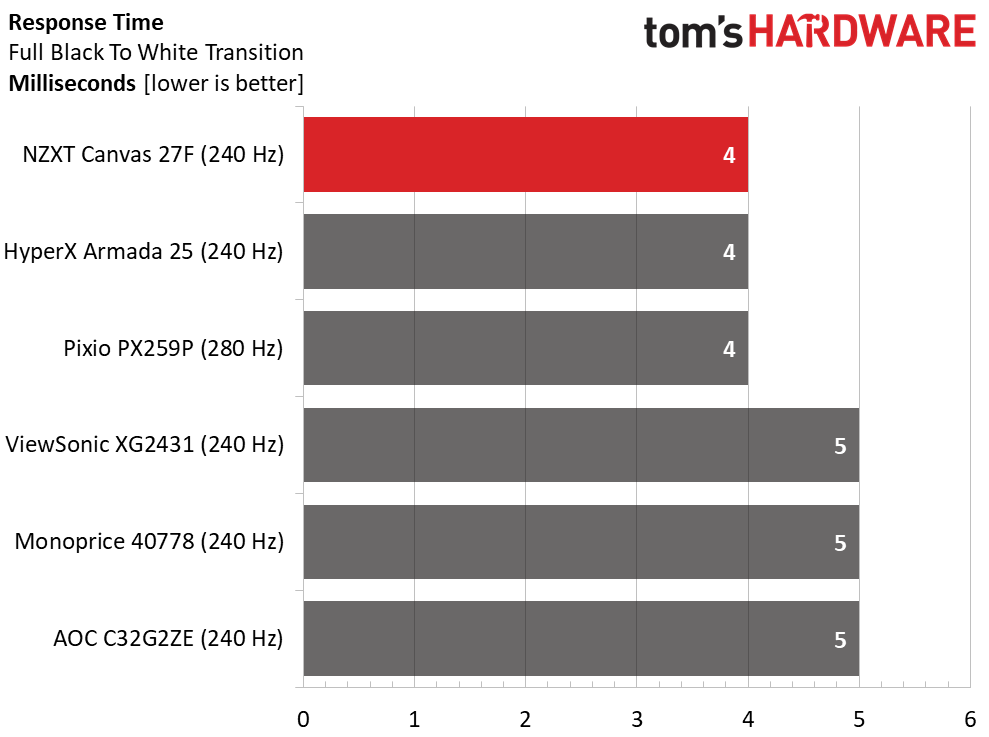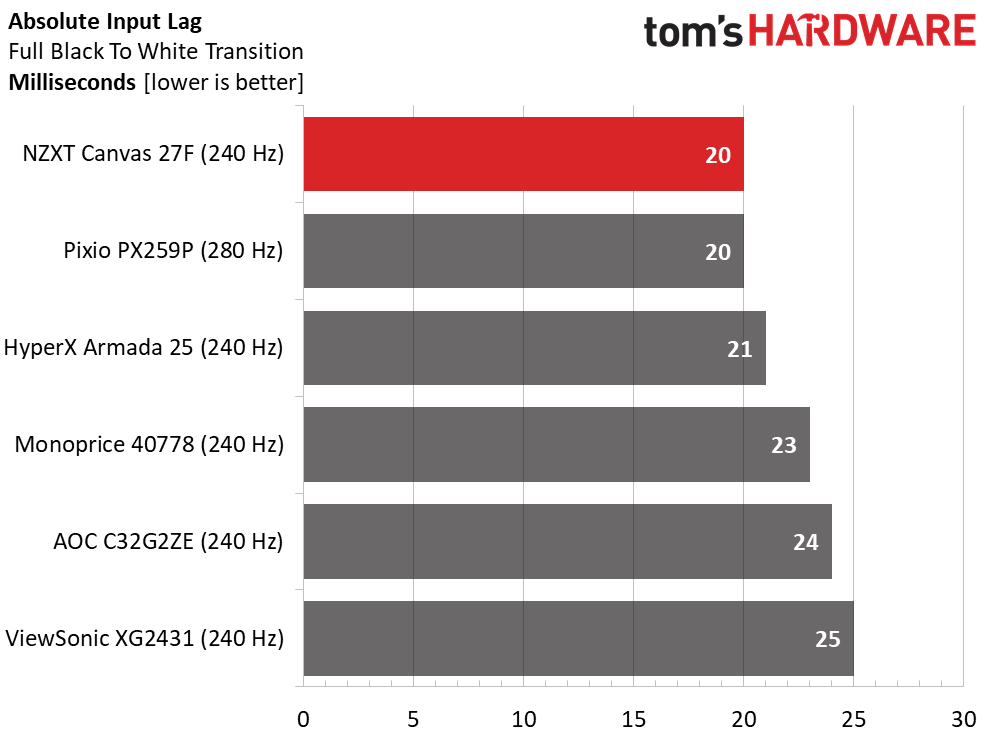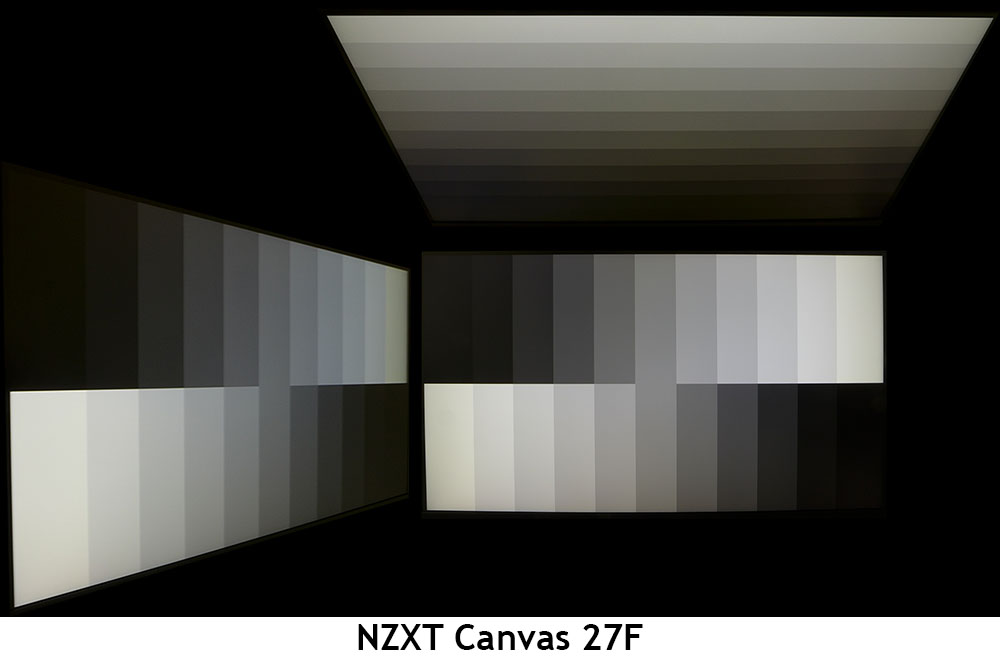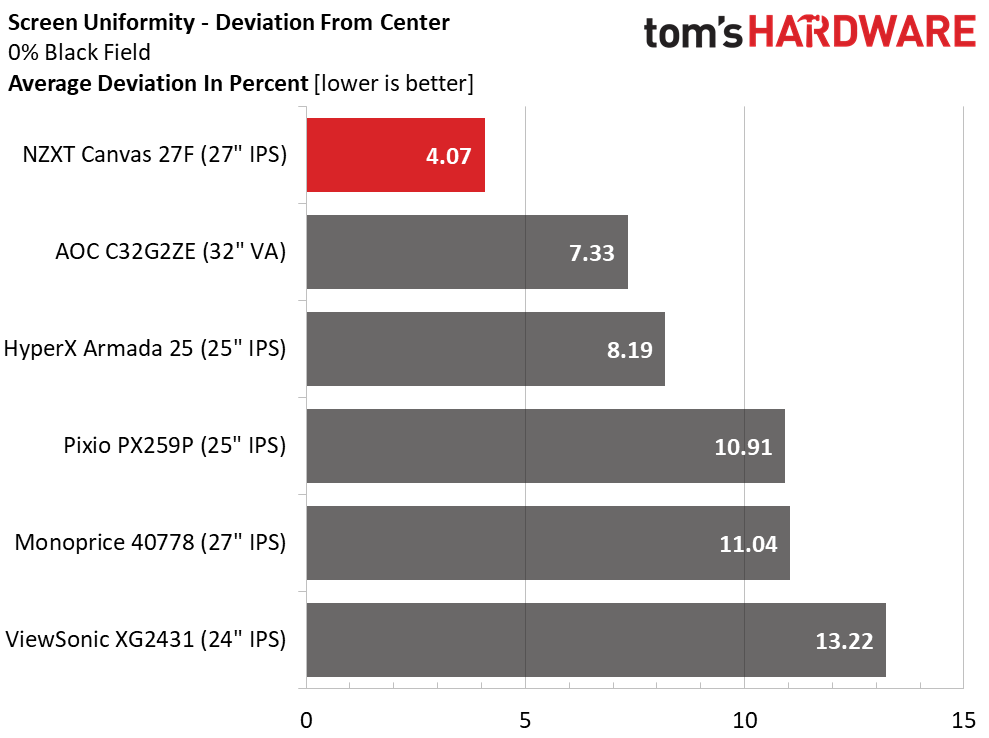Why you can trust Tom's Hardware
240 Hz FHD monitors are THE performance bargain, so I’ve rounded up a group of them from my test database to compare the Canvas 27F’s results. Included are the HyperX Armada 25, Pixio PX259P, Viewsonic XG2431, Monoprice 40778 and AOC C32G2ZE.
Pixel Response and Input Lag
Click here to read up on our pixel response and input lag testing procedures.


The first thing you’ll notice is that the Pixio can run at 280 Hz, but there is no apparent advantage here. It refreshes at 4ms like most 240 Hz screens and ties the Canvas 27F for first place in the lag test with 20 ms. Only a 360 Hz screen can respond quicker and costs about twice as much as the monitors here. For most gamers, myself included, a spread of 20 to 25 ms is small. The gaming experience will be roughly the same when playing on any of these panels. A highly skilled player will undoubtedly prefer the Canvas 27F for competition. It is completely qualified for premium eSports play.
Viewing Angles
The Canvas 27F is an excellent example of what IPS viewing angles can be. There is almost no reduction in brightness at 45 degrees off-axis and the color shift is barely visible as a blue tint. Gamma remains the same, meaning shadow and highlight detail stays sharp. The top view is slightly washed out and green but looks better than many similar IPS panels I’ve photographed.
Screen Uniformity
To learn how we measure screen uniformity, click here.
I consider any result under 10% to be visually perfect in the black field uniformity test. The Canvas 27F posted one of the best results I’ve seen, with just a 4.07% deviation from the center zone. No anomalies are visible in any test pattern, color or otherwise, even in a completely dark room. This is excellent performance, especially for such an inexpensive monitor.
MORE: Best Gaming Monitors
Get Tom's Hardware's best news and in-depth reviews, straight to your inbox.
MORE: How We Test PC Monitors
MORE: How to Buy a PC Monitor: A 2022 Guide
MORE: How to Choose the Best HDR Monitor
MORE: Best Gaming Monitors
MORE: How We Test PC Monitors
MORE: How to Buy a PC Monitor: A 2022 Guide
MORE: How to Choose the Best HDR Monitor
Current page: Response, Input Lag, Viewing Angles and Uniformity
Prev Page Features and Specifications Next Page Brightness and Contrast
Christian Eberle is a Contributing Editor for Tom's Hardware US. He's a veteran reviewer of A/V equipment, specializing in monitors. Christian began his obsession with tech when he built his first PC in 1991, a 286 running DOS 3.0 at a blazing 12MHz. In 2006, he undertook training from the Imaging Science Foundation in video calibration and testing and thus started a passion for precise imaging that persists to this day. He is also a professional musician with a degree from the New England Conservatory as a classical bassoonist which he used to good effect as a performer with the West Point Army Band from 1987 to 2013. He enjoys watching movies and listening to high-end audio in his custom-built home theater and can be seen riding trails near his home on a race-ready ICE VTX recumbent trike. Christian enjoys the endless summer in Florida where he lives with his wife and Chihuahua and plays with orchestras around the state.

